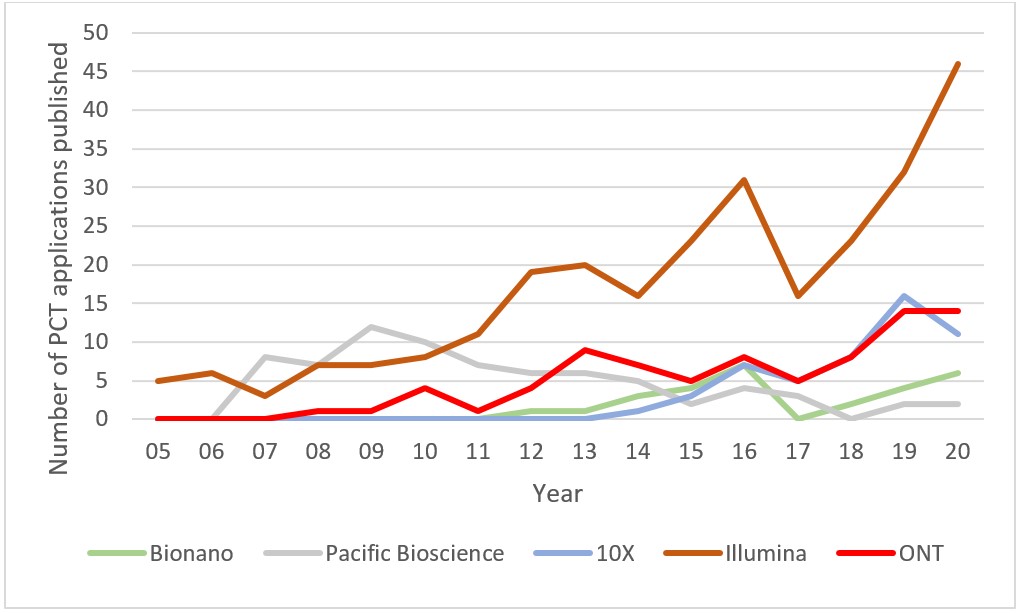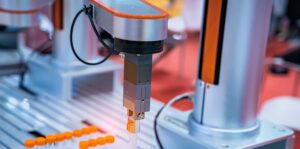18/03/2021
While the United Kingdom’s response to the ongoing COVID-19 pandemic has drawn criticism, there are ways in which the UK has performed well and that perhaps even warrant the accolade “world beating” or, at least, world leading. One of these is the recent success of the vaccine rollout. Another less heralded but equally impressive achievement has been the use of mass genetic sequencing of the virus.
Over time, the genetic material of viruses, including COVID-19, mutate. Mutations can affect the virulence of the virus, its severity and, arguably most importantly, the effectiveness of vaccines. In spring 2020, a consortium now known as COVID-19 Genomics UK (COG-UK) was set up to apply genome sequencing on a vast scale to enable tracking of the virus, and these mutations, within the UK population. The sequencing is typically carried out on samples from the UK’s COVID-19 testing programme.
COG-UK have sequenced samples from roughly 5% of the UK’s positive COVID tests, a much higher proportion than achieved anywhere else in the world. This has enabled the UK to identify COVID-19 variants of particular concern and has informed public policy and containment strategies.
Until recently, such a high level of sequencing would have been impossible. However, in the last couple of decades, huge strides have been made to establish a series of sequencing techniques known collectively as second generation sequencing that have enabled low-cost and high-throughput sequencing. Meanwhile, so-called third generation sequencing, which addresses some of the shortcomings of second generation sequencing, have been made commercially available. COG-UK have been able to make use of both second and third generation sequencing in response to the pandemic.
Second and Third Generation Sequencing
In second generation sequencing, the sample to be sequenced is split up into fragments which are each sequenced in parallel. This reduces sequencing time and the chance of errors. Thus, second generation sequencing has significantly reduced the cost of sequencing while increasing speeds.
Illumina® is the market leader in second generation sequencing with their sequencing by synthesis systems forming the backbone of COG-UK’s sequencing efforts.
Second generation sequencing is computationally complex, particularly if the expected full sequence is not already well known, as it involves piecing the sequence fragments back together. For example, COVID-19 samples are split into hundreds or, more likely, thousands of fragments before being sequenced.
Third generation sequencing attempts to remove or substantially reduce the computational complexity involved in piecing together full sequences by providing systems capable of reading much longer sequences in one go. The problem is that the longer the sequence, the more accurate the sequencing system needs to be if errors are to be avoided. Producing such a system is technically challenging. Only in recent years have there been any commercially available third generation technologies that can cheaply sequence long strands of DNA with an acceptable degree of accuracy.
COG-UK have been able to use third generation sequencing systems provided by Oxford Nanopore Technologies (ONT) to assist with their sequencing effort.
Future
The far-reaching benefits of second generation sequencing has been evident in the scientific community for some time. The pandemic has perhaps for the first time given the general public a glimpse of this technology’s potential. This, combined with the rise of third-generation sequencing techniques, demonstrates how we are in the midst of an exciting time for this field with much potential for development in the future.
Patent Application Numbers
Patent application numbers can be used as a proxy for innovation. It is important to file a patent application for an invention before that invention has been made available to the public (and so before it has been commercialised). So, when a company is filing lots of patent applications this is a good indication that exciting developments are in the pipeline.
COG-UK’s main partner, the Wellcome Sanger Institute, identifies five companies whose equipment is used in their sequencing. Graph 1 below shows the number of PCT patent applications published each year between 2005 and 2020 belonging to those companies in the IPC categories: C12Q1 and G01N33. C12Q1 includes measuring or testing processes involving enzymes, nucleic acids or microorganisms. G01N33 includes investigative methods involving various entities including entities relevant to sequencing.

Graph 1 Published PCT applications by year in the IPC categories: C12Q1 and G01N33
Although the number of publications has decreased or flat-lined for some companies; ONT, Illumina and 10X Genomics have a clear upward trend over the last 15 years. Illumina’s rise is particularly marked, perhaps an indication that the clear market leader in genetic sequencing technologies has upped R&D given the competition from disruptive newcomers such as ONT and the rise of third generation sequencing. In any case, the patent filings from this sample of companies demonstrates how we can expect significant innovation in this field in the coming years.
There is a delay of 18 months between the filing of a patent application and its publication. So, the data of Graph 1 does not include filings made since the start of the pandemic in early 2020. It will be interesting to see if there has been a flurry of patent applications relating to COVID-19 specific applications of sequencing systems filed in the last year. For example, ONT have recently released the LamPORE COVID-19 system, which is a highly sensitive COVID-19 test employing third generation sequencing technology.
Conclusion
The COVID-19 pandemic has demonstrated how genetic sequencing has become a mature enough technology to be implemented en masse and that has value in informing public health policy. With the rise of commercial third generation sequencing systems, the availability and power of sequencing will surely only increase while costs decrease.
This article is for general information only. Its content is not a statement of the law on any subject and does not constitute advice. Please contact Reddie & Grose LLP for advice before taking any action in reliance on it.

